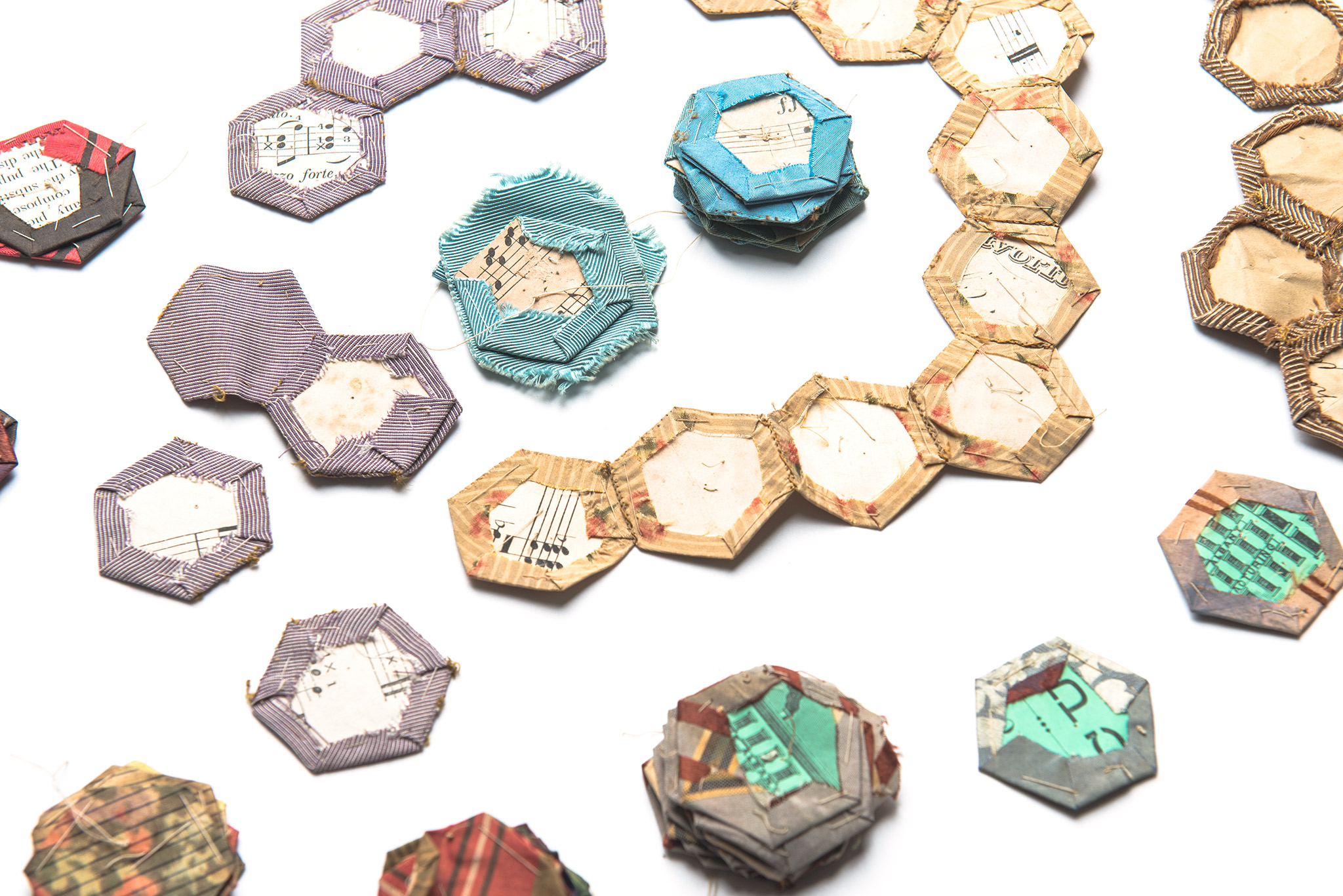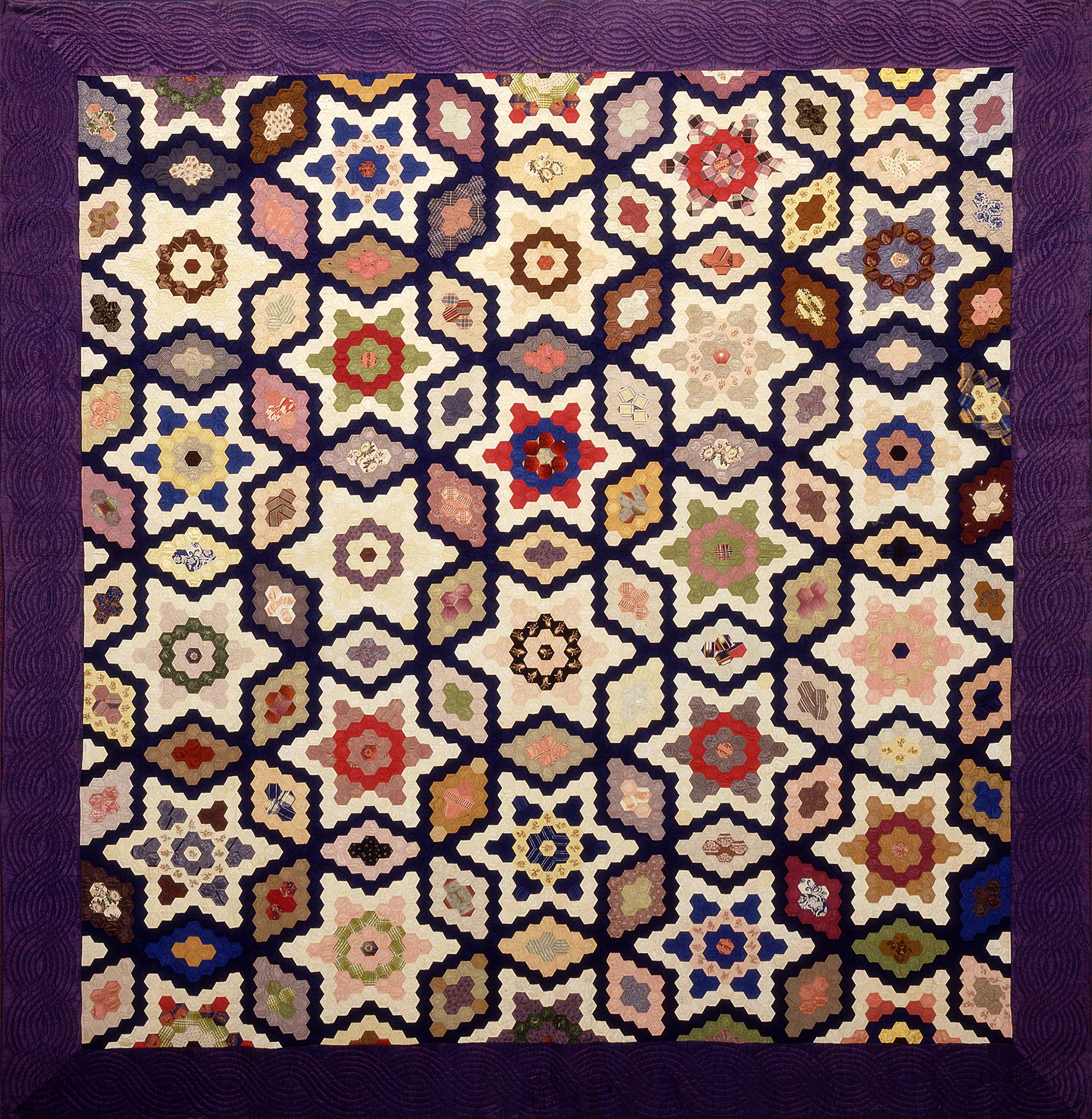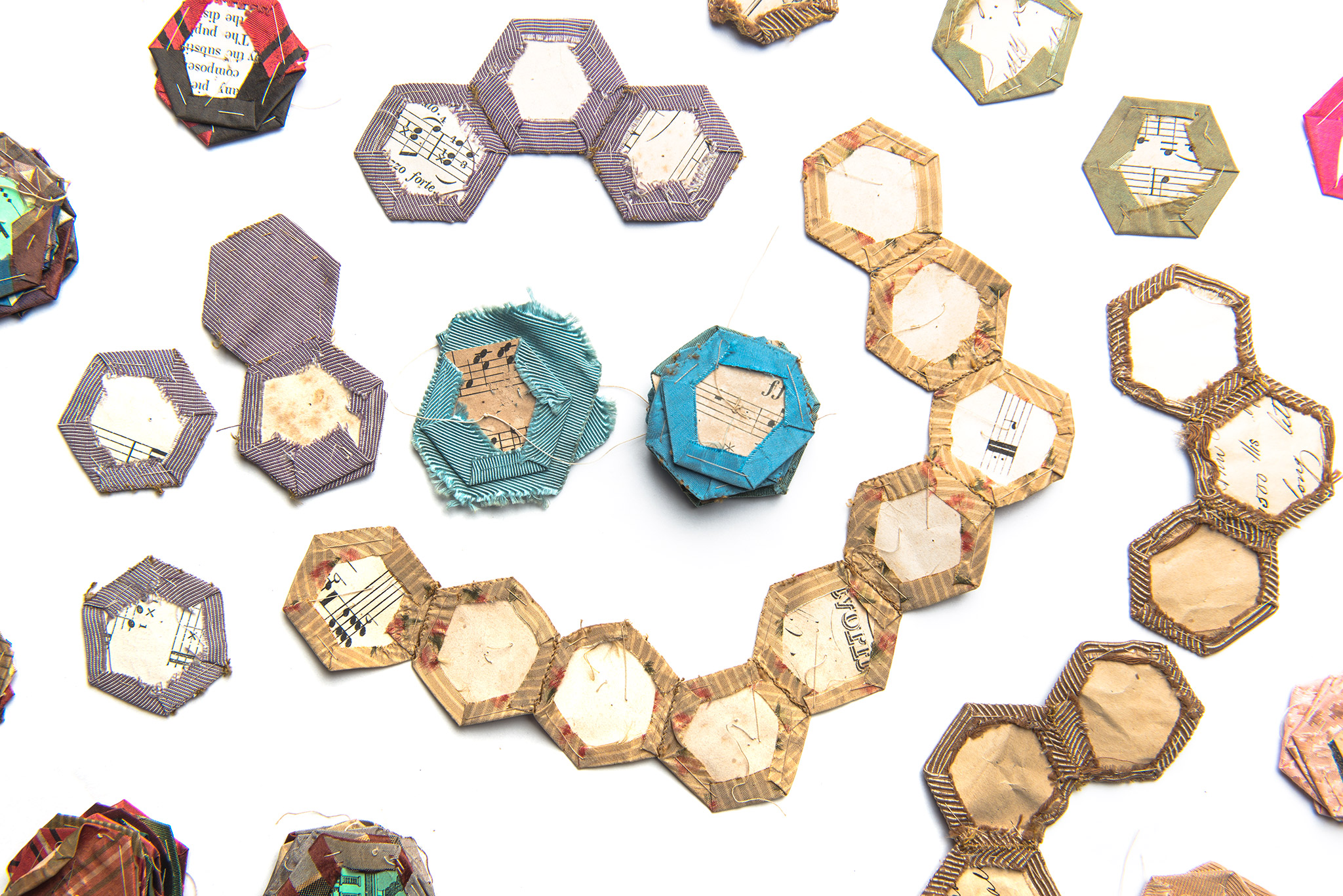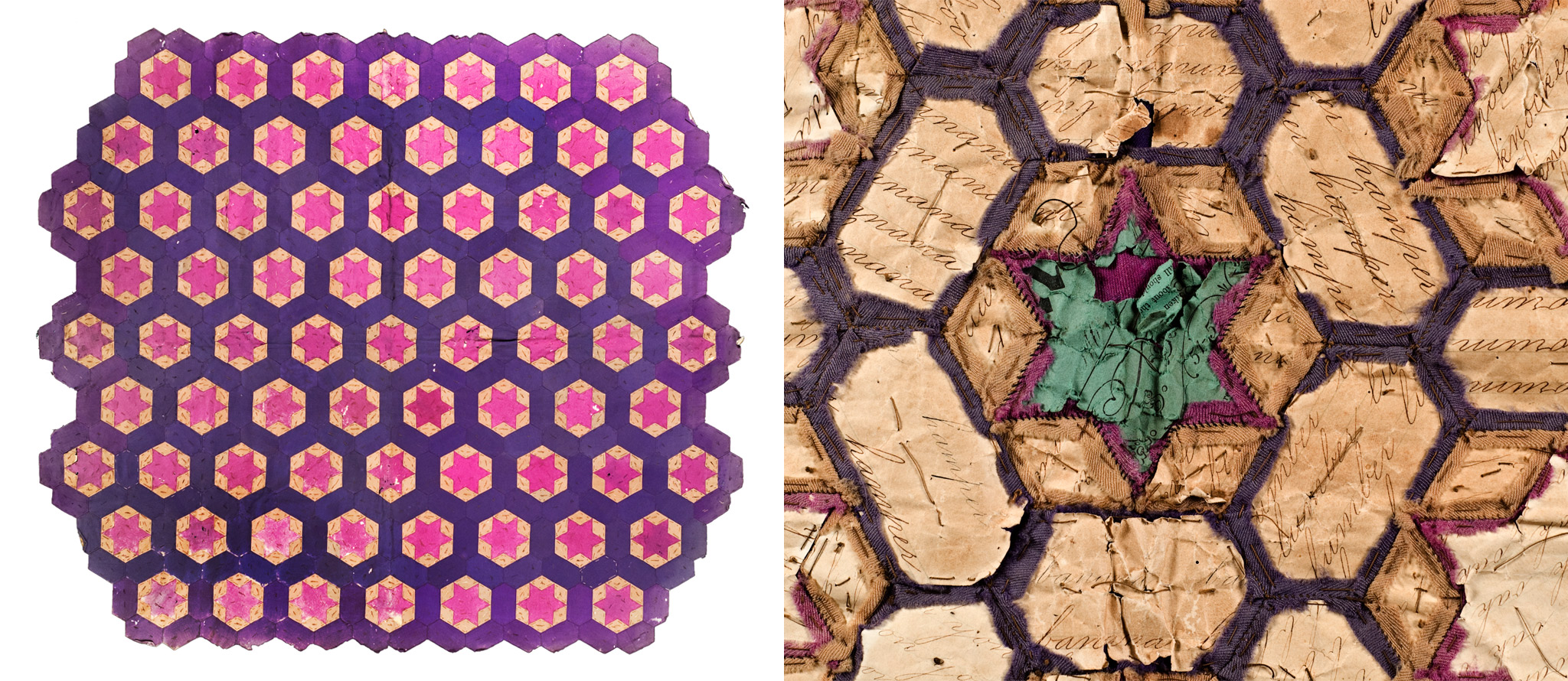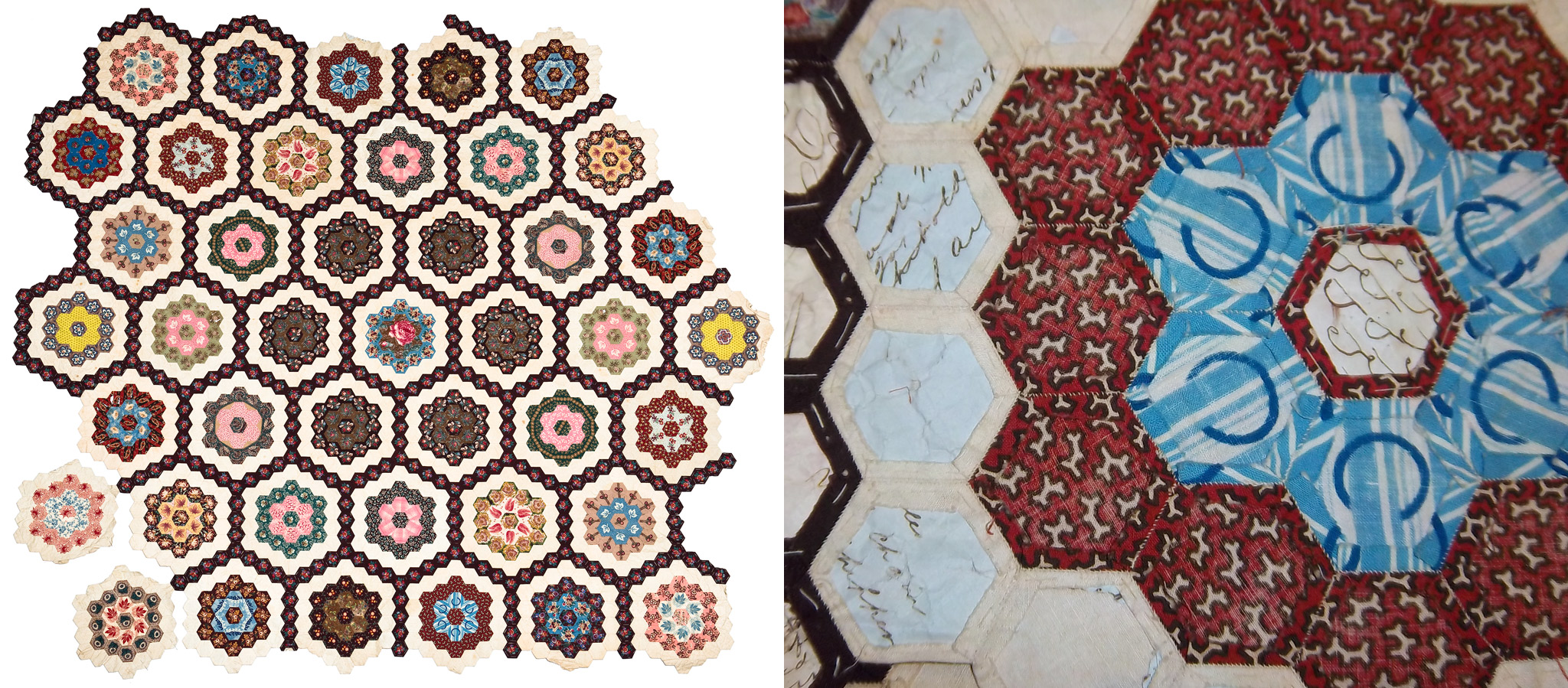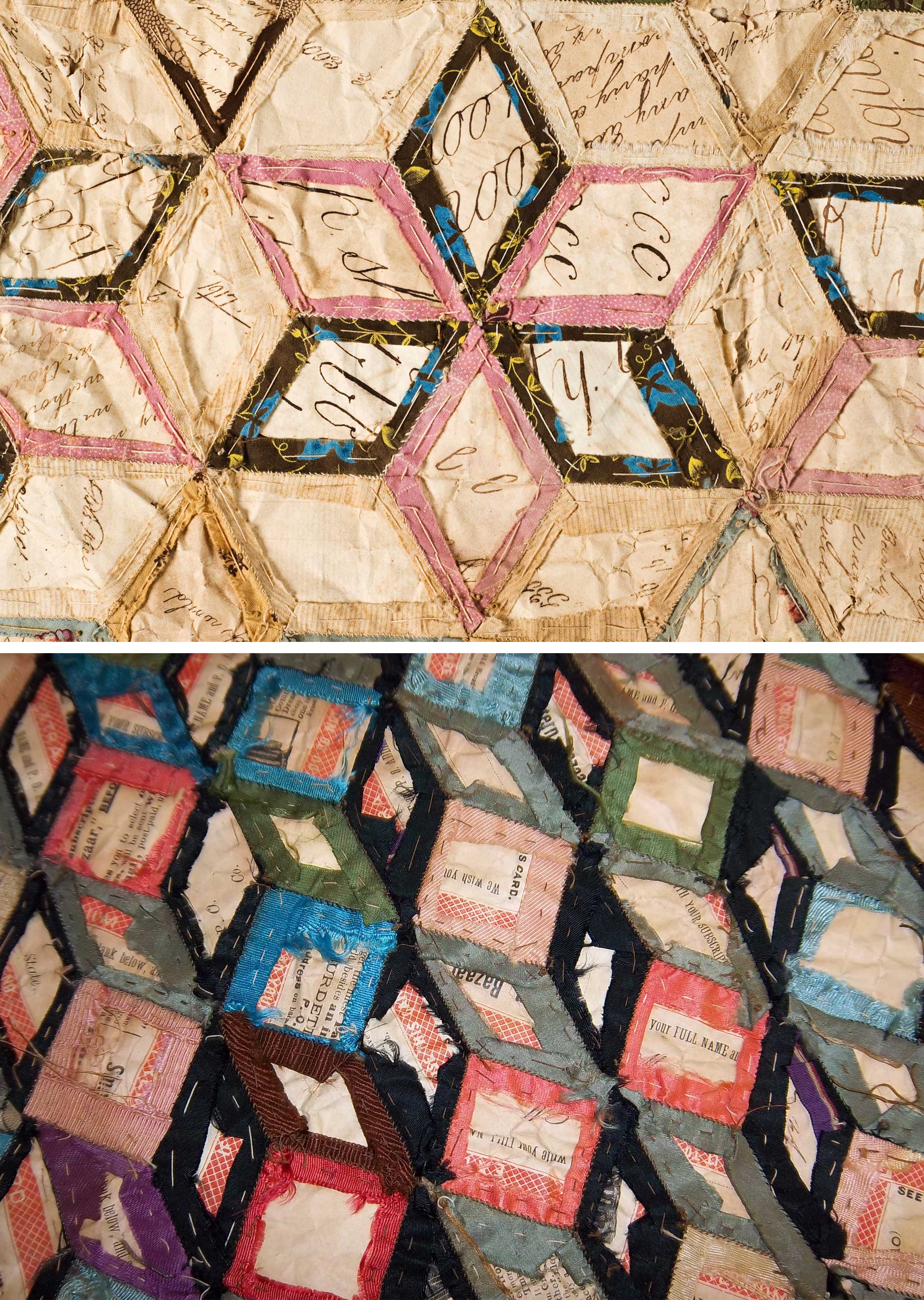Paper Template Piecing
The Charleston Museum’s quilt collection boasts a wide variety of handmade treasures, demonstrating just how strong the quiltmaking tradition was – and still is – in the Lowcountry. While it is virtually impossible to select a favorite from them, one technique that is particularly fascinating to me is paper template piecing, sometimes called mosaic patchwork. An exacting procedure, this method was popular throughout the 18th and 19th centuries. It was time consuming to make, and the Museum has many unfinished examples as well as stunning completions.
It is some of these unfinished projects that offer a rare glimpse into the origins and constructions of these quilts. In this method, a paper template for each shape in the quilt is basted to the fabric; those shapes are then stitched together and the quilt top is completed before the paper is removed. So, if the project is unfinished, we often find the paper pieces still attached. What an interesting recycling bin this paper represents! We find bits of letters, penmanship practice sheets, newspapers, advertisements, religious tracts and even sheet music.
Stars & Diamonds paper template pieced quilt, 1852, made by Marina Jones Gregg (1811-1899). Marina received an award for Best Quilt from the Southern Central Agricultural Society in 1852 for this masterpiece.
The mosaic quilt in the entrance case to the current Textile Gallery exhibition, Piece by Piece: Geometric Quilts, is a beautifully completed masterpiece. Not surprisingly, the maker, Marina Jones Gregg, won a Best Quilt award for her efforts in 1852. But, the Museum also has additional pieces made by Gregg which show us some of these 1 3/8” hexagon paper tidbits. These segments were apparently not needed for this quilt. Or, perhaps she was planning to make another!
Additional hexagon pieces made by Marina Jones Gregg
Without the paper template, it would have been almost impossible to piece this pattern of stars, diamonds and elongated hexagons. The wool fragment still contains an interesting array of paper, one bearing the date 1871.
Grandmother’s Flower Garden, c. 1870
Another quilt that was never finished is this Grandmother’s Flower Garden pattern, made by Virginia Mikell Hay around 1870. One of her paper templates is from a booklet dated 1842; it would seem that she had been collecting paper and fabric for many years. I think most quilters will resonate with this stash mentality.
Mosaic quilt top fragment made of paper-pieced hexagons. Made by Virginia Mikell Hay c. 1870.
Two other quilt fragments, not currently on display, have wonderful papers. One is a colorful silk Tumbling Blocks piece made in Georgetown around 1877 which still contains a myriad of papers. The other is a Star & Diamonds fragment made by Susan Henrietta Wagner in Charleston in the mid 19th century. One of her papers is marked “1831,” and a printed one bears the words “King Street.”
Multicolored pieced quilt top fragment in the Tumbling Blocks pattern, c. 1877. The shapes were formed over newspaper, old letters, and plain paper, basted and joined by hand.
While the fabrics and patterns of our quilts are beautiful and entrancing, looking at these little paper shapes can perhaps launch a new and exciting investigation into both the quilts and their makers.


